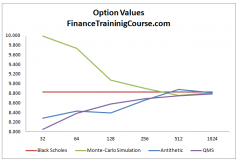Treasury Training – E-learning course: Introduction to Treasury selling and the TMU function
8 mins read To summarize, the principle objective of estimating the amount at risk in each of these transactions is to determine how the transaction should be structured and what would be the impact of the structure on cost both out of pocket and explicit cost as well as implicit cost and what is the long range impact on the customer’s portfolio and profile of the structure that you have suggested.


